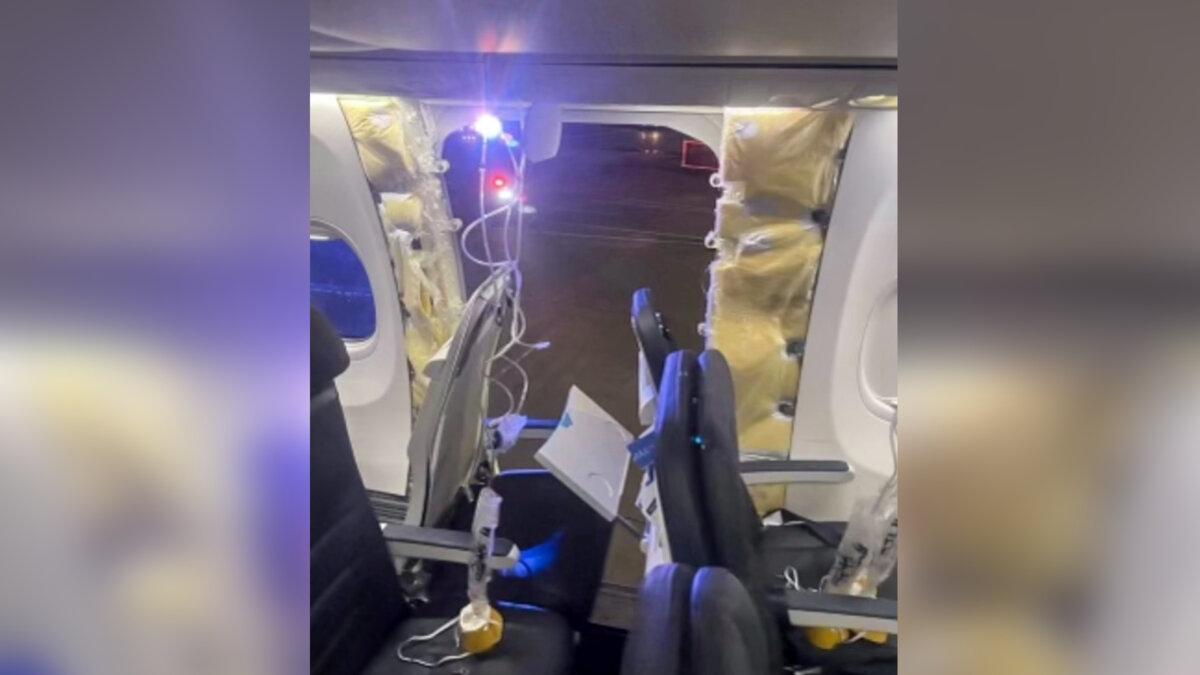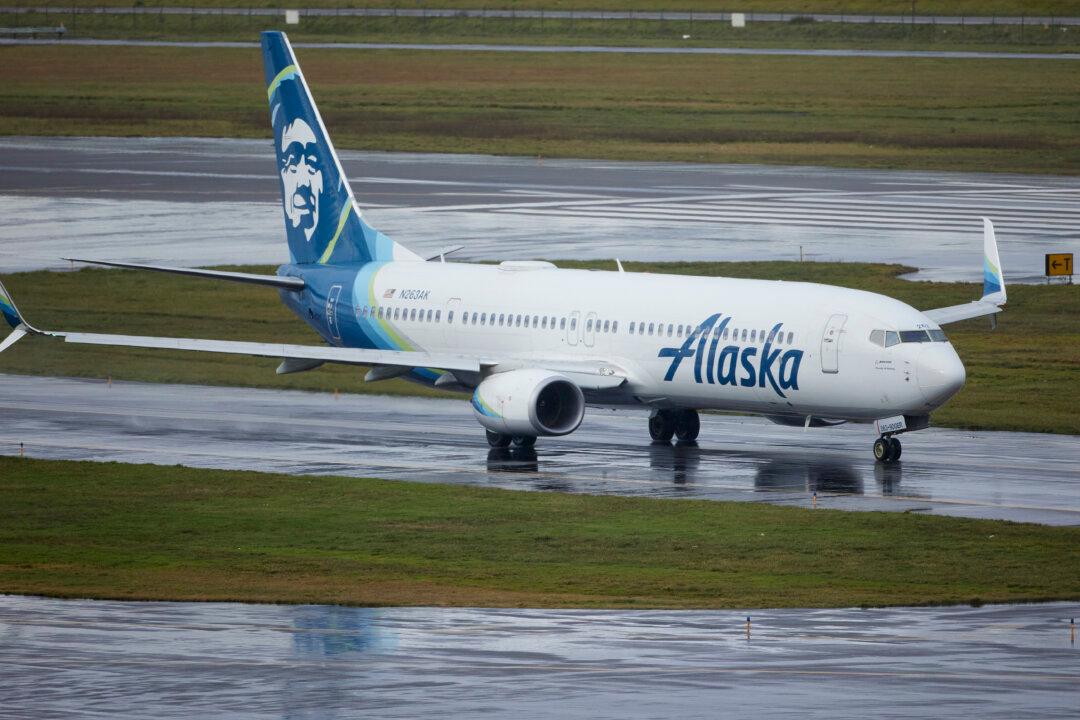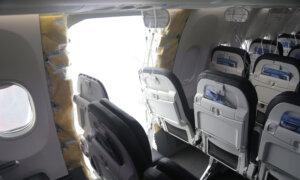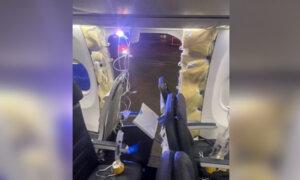Federal aviation authorities have taken “new and significant actions” against Boeing, including considering stripping the company of its power to self-inspect aircraft, amid continued fallout from the recent mid-air door plug blowout.
About a week ago, a panel covering an unused emergency door blew out mid-flight on an Alaska Airlines-operated Boeing 737 Max 9 series aircraft, prompting a rapid decompression and forcing an emergency landing.
In the immediate aftermath of the incident, the Federal Aviation Administration (FAA) grounded all 737 Max 9s, ordered “enhanced inspections” on the planes, and later opened an investigation into Boeing to see if failed to ensure proper production safety standards.
On Friday, the FAA ramped up its actions against Boeing, announcing a series of actions that include increased oversight of Boeing production and manufacturing, an audit of the Max 9 production line—and potentially removing Boeing’s ability to self-inspect its planes.
“It is time to reexamine the delegation of authority and assess any associated safety risks,” FAA Administrator Mike Whitaker said in a statement, adding that the agency is “exploring” the use of an independent third party to carry out oversight of Boeing’s inspections and its quality controls.

Boeing responded to a request for comment with the following statement: “We welcome the FAA’s announcement and will cooperate fully and transparently with our regulator. We support all actions that strengthen quality and safety and we are taking actions across our production system.”
Additional ‘Discrepancies’ and Actions
The new actions—which the FAA called “decisive,” “immediate,” and “significant”—also include an audit of not just the Boeing 737 Max 9 production line but also its suppliers. The aim is to assess Boeing’s compliance with its approved quality procedures.The audit could, therefore, include Spirit AeroSystems, the supplier of the Max 9 fuselages, which includes the door section that came off the Alaska Airlines plane over the weekend.
A day before the announcement of the latest actions, the FAA questioned Boeing’s procedures, saying it had launched an investigation to determine if the company “failed to ensure completed products conformed to its approved design and were in a condition for safe operation,” in compliance with federal regulations.
“Boeing’s manufacturing practices need to comply with the high safety standards they’re legally accountable to meet,” the FAA said in a statement on Jan. 11. “The safety of the flying public, not speed, will determine the timeline for returning the Boeing 737-9 Max to service.”

Prior to the investigation announcement, the FAA said in a Jan. 10 letter to Boeing that it had been notified of “additional discrepancies” on other 737 Max 9 planes.
While the FAA did not go into further detail on the discrepancies, United Airlines (one of two U.S. carriers that operates the Max 9) said Monday it had found issues relating to the installation of door plugs, including loose bolts, while inspecting its fleet of Max 9s.
The FAA’s latest action also includes enhanced monitoring of Max 9 in-service events, such as the recent door plug blowout.
The Incident
Alaska Airlines Flight 1282 was en route to Ontario, California, from Portland, Oregon, when the incident occurred, forcing an emergency landing.The door plug blowout took place about six minutes into the flight when the aircraft reached an altitude of about 16,000 feet.
The pilot declared an emergency, notifying air traffic control of a depressurization issue.
Social media footage showed a window and a portion of a side wall panel missing on the airplane and oxygen masks deployed.

Images of the aircraft shared by passengers onboard seem to indicate that, during the flight, the rear mid-cabin exit door became detached from the aircraft, Flightradar24 reported on its website.
The new Boeing 737 MAX 9 was delivered in late October to Alaska Airlines and certified in early November, according to FAA data.
Boeing said it would investigate the incident and cooperate with federal aviation authorities on their probe.
In a statement obtained by The Epoch Times, Boeing said that it “will cooperate fully and transparently with the FAA and the NTSB on their investigations,” referring to the National Transportation Safety Board.
Other Issues
Boeing has faced previous issues with its 737 Max 8 model, leading to its grounding worldwide between March 2019 and December 2020.The groundings followed two fatal crashes involving the model: Lion Air Flight 610 on Oct. 29, 2018, and Ethiopian Airlines Flight 302 on March 10, 2019, resulting in a combined total of 346 fatalities.
In April, a manufacturing issue was discovered in the 737 Max 8 model related to the installation of fittings in the rear fuselage. Boeing insisted it was not an immediate safety concern, and the FAA validated that conclusion, allowing affected planes to continue flying while inspections were conducted.
At the end of December, Boeing urged airlines to inspect newer 737 Max models for a possible loose bolt in a key flight control system after an international operator found a bolt with a missing nut in the rudder and Boeing found a similar issue on an undelivered plane.







